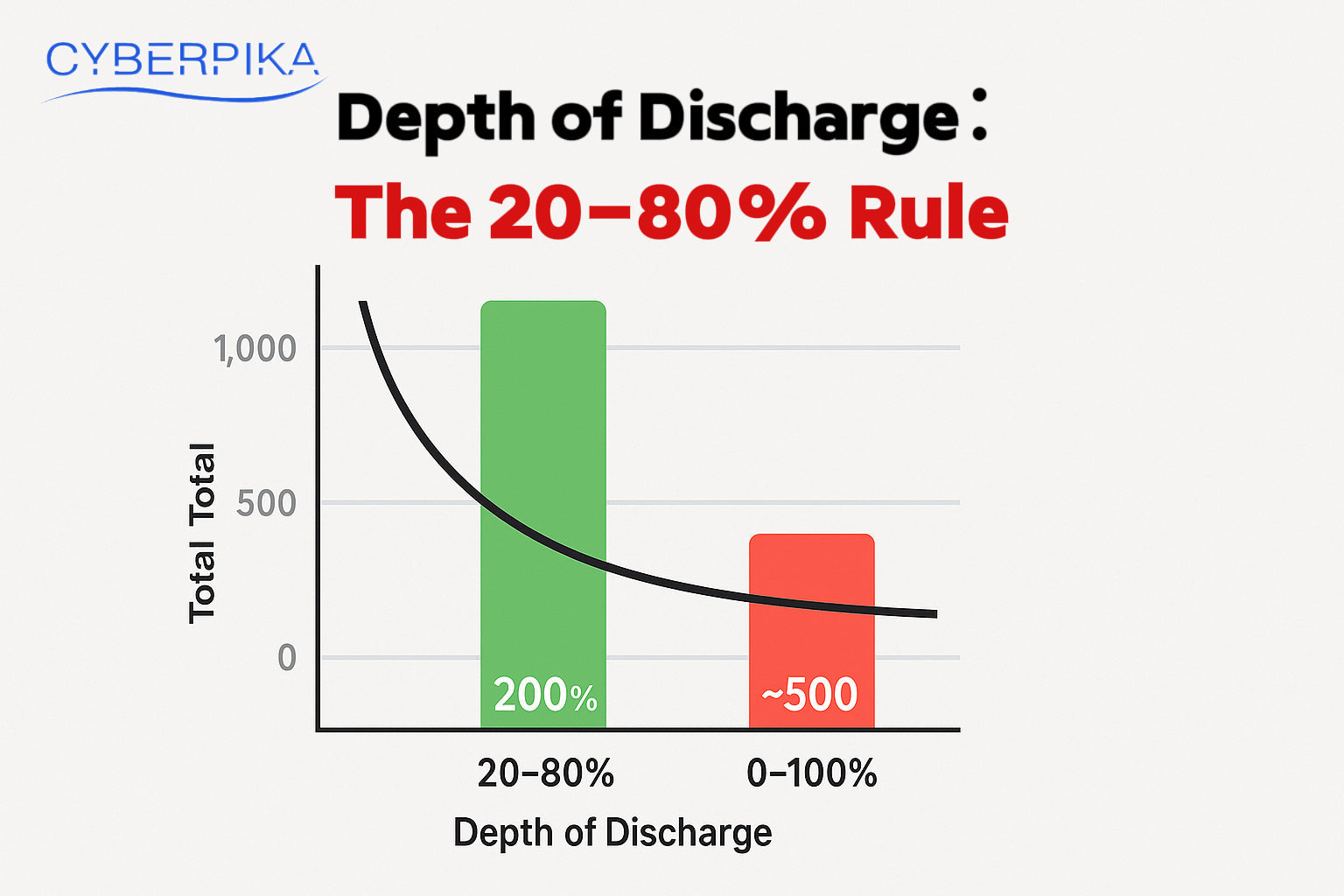If you're focused on battery longevity, you've likely heard the advice: don't always charge to and don't let it drain to . This advice is rooted in a core concept of battery science called Depth of Discharge (DoD).
Understanding DoD is the most powerful tool you have to significantly extend your e-bike battery's lifespan. It's the reason the Rule is the golden standard for smart charging. This guide will explain the science behind DoD and show you how a small change in your routine can translate to years of extra life for your battery.
What is Depth of Discharge ()?
Depth of Discharge () is the percentage of a battery's total capacity that has been used, or "discharged."
- : Means you have used of the battery's capacity (i.e., you drained it from all the way down to ).
-
: Means you have used of the capacity (i.e., draining it from down to , or from down to ).
-
: Means you have used half of the capacity (i.e., draining it from down to ).
The Inverse Relationship: vs. Charge Cycles
The key to battery longevity is understanding the inverse relationship between and the number of charge cycles your battery can handle.
The takeaway: The less you drain your battery on any given cycle, the more cycles you get in total. The small amount of capacity you save by not draining it fully is often more than made up for by the sheer increase in the number of times you can use it.
The Science of the Rule
The rule is the best compromise between convenience and longevity. It recommends keeping your battery's state of charge within this window for daily use.
The Problem at the Top (Above ):
-
When a lithium-ion battery is forced to accept charge past , the chemical reaction that stores energy becomes stressful and less efficient. This generates heat and accelerates the aging of the cells.
-
The cells are under the highest internal voltage and pressure when they are near full, which is the most strenuous resting state.
The Problem at the Bottom (Below ):
-
Draining the battery too low puts the cells under a huge amount of stress. Repeatedly draining the battery to () will drastically reduce its total lifespan.
-
If a battery is left to sit in a fully discharged state, it risks "deep discharge," a condition that can render the battery permanently unusable and unsafe to charge.
How to Apply the Rule Daily
-
For Daily Use (Commuting/Errands): Finish your ride and check your charge level. If it's below , charge it up to about and then unplug it. If it's above , you probably don't need to charge it yet.
-
For Long Rides: When you need maximum range, it is perfectly fine to charge to . The key is not to store it at . Use that capacity quickly.
-
For Long-Term Storage: Charge or ride your battery until it is in the range before storing it for more than a week.
By being mindful of how far you discharge your battery, you gain control over the rate at which it degrades. Adopting the rule for your daily routine is the single most effective way to ensure your battery provides peak performance for many years to come.


Share:
E-Bike Battery 101: What Voltage & Ah Really Mean
Charging Habits That Kill Your Pack—And Easy Fixes